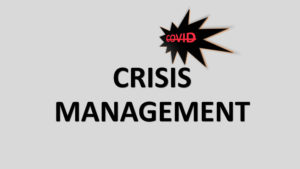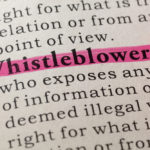Back to Basics: Crisis Management Strategy during COVID-19
Often in a crisis, the natural instinct is to overthink, come up with a complex solution, or reinvent the wheel. The most effective crisis planning method, however, is the most tried and true method that works in times of a crisis or in the calmest of seasons. Communicate honestly, transparently, and often.
Over the last few weeks, numerous clients from a variety of sectors, including business, education, and healthcare companies, have faced the task of communicating to stakeholders and the media about COVID-19. The same questions in any crisis have come up—how quickly should I communicate, when should we communicate, and how much should we really say?
Communicate honestly, transparently, and often.
From a crisis-management perspective, the COVID-19 crisis is not very different from any other. You likely have limited information, you must weigh certain privacy concerns as well as certain legal requirements like HIPAA or FERPA or other laws, and you must be sensitive to the situation. Remember to get back to basics. Communicate what you know and only what you know. Over the last few weeks, I have had many ask something like, “Well, we think the outbreak could have started from an asymptomatic employee, but we’re not really sure and the health department is telling us it can’t be sure either. Can we just say that?” Let’s ask the question again. “Do you know how the outbreak started?” The answer is no. So why would you communicate speculation? You wouldn’t normally do that in an employment crisis or a more run-of-the-mill business crisis. Especially in a situation where our most trusted medical experts do not know the answers, it’s okay to say “I don’t know.” I can trust a person who says I don’t know and is honest rather than someone who is going speculate or even worse, confidently state something as fact when he or she is not sure. Honesty and transparency are particularly important right now where the messages about this virus are confusing and often contradictory. More than ever, people are searching for answers, so only give them the ones you have.
 Another basic that’s difficult to remember in times like this is to communicate often. It’s not easy to tell employees that one of their coworkers has tested positive or tell families that a patient in a facility has tested positive. The temptation is to gather the muster to communicate once and hope no one asks again. But just because you choose to stay silent doesn’t mean everyone else is doing the same. Your employees, families, or other stakeholders are communicating amongst themselves and posting on social media. You can’t control the message if you just give it over to others to do what they want with it. People want updates. If you say you are going to do testing, communicate the results of the testing. If you are meeting to decide to put additional protocols in place, follow-up with a communication on the proactive measures you are taking,
Another basic that’s difficult to remember in times like this is to communicate often. It’s not easy to tell employees that one of their coworkers has tested positive or tell families that a patient in a facility has tested positive. The temptation is to gather the muster to communicate once and hope no one asks again. But just because you choose to stay silent doesn’t mean everyone else is doing the same. Your employees, families, or other stakeholders are communicating amongst themselves and posting on social media. You can’t control the message if you just give it over to others to do what they want with it. People want updates. If you say you are going to do testing, communicate the results of the testing. If you are meeting to decide to put additional protocols in place, follow-up with a communication on the proactive measures you are taking,
The basics of communication and crisis management we use in our everyday lives shouldn’t go out the door during a pandemic. Communicate honestly, communicate transparently, and communicate often. And finally, don’t forget the human element of this crisis. More than ever it’s important to communicate compassion and sympathy along with the data and facts. We could all use that right now.
If you or your business have a crisis management, media relations or media training need, please reach out to us to help guide you through this difficult time.
Photo By ThanikaThaiPhotoStock from Shutterstock





